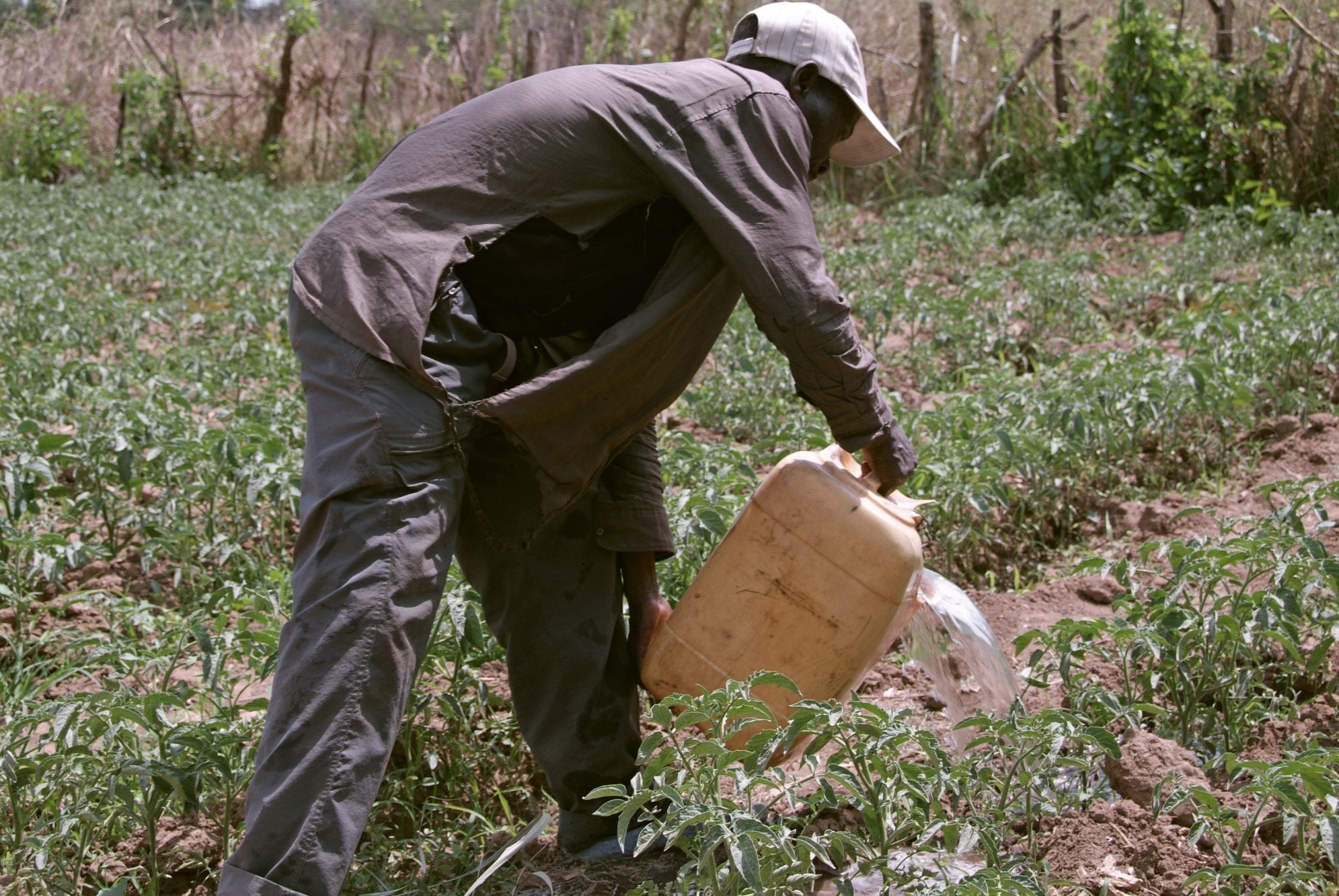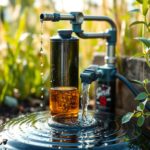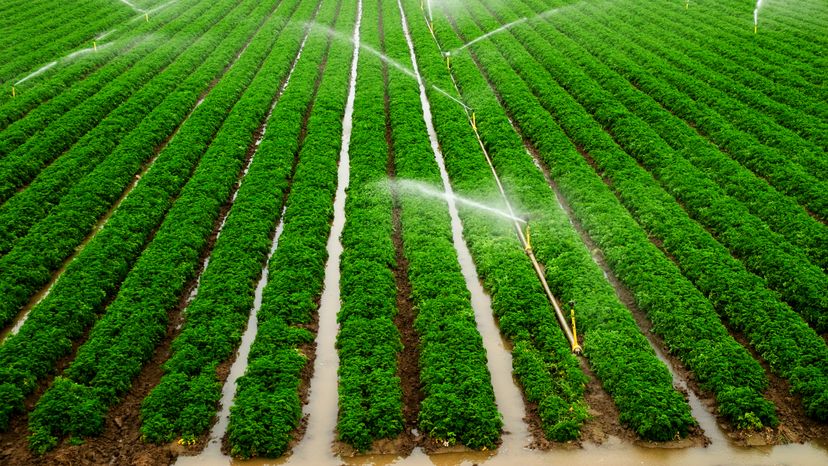Which is the simplest and cheapest source of irrigation? A Comprehensive Guide to Affordable Irrigation Solutions

Water scarcity and rising agricultural costs have put immense pressure on farmers and gardeners alike to find efficient and affordable irrigation solutions. This article aims to explore the simplest and cheapest sources of irrigation available today, providing a comprehensive guide that highlights practical, cost-effective methods. From traditional practices to innovative techniques, we will examine various irrigation systems that can suit different types of crops and landscapes. Whether you are a seasoned farmer or a beginner with a home garden, understanding these affordable irrigation options can help improve productivity while conserving valuable resources.
What is the Simplest and Cheapest Source of Irrigation?
The simplest and cheapest source of irrigation is often gravity-fed irrigation, which utilizes the natural slope of the land to move water from a source to crops without the need for complex machinery or pumping systems. This method is particularly effective in areas where rivers or streams are located above the fields, allowing water to flow downhill. By relying on gravity, farmers can minimize costs associated with energy and equipment, making it a sustainable option for small-scale agriculture. The initial setup may involve creating ditches or channels, but once established, gravity-fed systems require minimal maintenance and can effectively distribute water evenly across vast areas.
Advantages of Gravity-Fed Irrigation
One of the primary advantages of gravity-fed irrigation is its cost-effectiveness. Since it does not require electricity or expensive pumps, farmers can save on operational costs while still ensuring that their crops receive adequate water. Additionally, this method allows for a steady source of water supply, reducing the risk of drought and ensuring consistent crop yields. Moreover, it promotes better soil moisture retention, leading to healthier plants and improved productivity over time.
Disadvantages of Gravity-Fed Irrigation
Despite the benefits, gravity-fed irrigation comes with its own set of challenges. For instance, it requires access to a reliable water source at a higher elevation. In areas where terrain is flat or water sources are scarce, this type of irrigation can be impractical. Additionally, if the channels or ditches are not carefully constructed, they can lead to erosion or uneven distribution of water, which can negatively impact crop growth. Therefore, careful planning and assessment of the land are crucial for successful implementation.
Alternative Cheap Irrigation Methods
Other affordable irrigation methods include drip irrigation and soaker hoses. While drip irrigation involves a slight investment in tubing and emitters, it provides water directly to the soil with minimal waste, making it an efficient option in water-scarce regions. Soaker hoses, on the other hand, can be a low-cost solution as they allow water to seep through porous materials to irrigate plants slowly. Both options may involve initial setup costs but ultimately save money and resources in the long run.
Impact of Climate on Irrigation Choices
The climate of an area plays a crucial role in determining the most effective irrigation method. Regions with high rainfall may rely less on irrigation systems, whereas arid or semi-arid areas require more efficient solutions. In dry climates, farmers may prioritize conservation methods, such as mulching or using xeriscaping, to complement gravity-fed systems. Understanding local climatic conditions helps farmers tailor their irrigation strategies for higher efficiency and sustainability.
Future of Low-Cost Irrigation Technologies
Looking ahead, advancements in irrigation technology continue to emerge, offering new, affordable solutions for farmers. Innovations include smart irrigation systems that utilize sensors to optimize water usage based on soil moisture levels, thus reducing waste and costs. Additionally, the development of low-cost solar-powered pumps may make irrigation more accessible to smallholders in remote areas. Embracing these technologies can lead to better water management practices and improved crop productivity.
| Method | Cost | Efficiency |
|---|---|---|
| Gravity-Fed | Low | Moderate |
| Drip Irrigation | Medium | High |
| Soaker Hoses | Low | Moderate |
Which is the simplest and cheapest method of irrigation?

The simplest and cheapest method of irrigation is often surface irrigation. This method relies on the natural landscape and gravity to distribute water throughout the fields. Surface irrigation is particularly cost-effective because it requires minimal investment in technology and equipment. Here’s a detailed exploration of this method, along with its specific mechanics and advantages.
The Basics of Surface Irrigation
Surface irrigation involves the application of water to the soil surface and letting it flow across the landscape to reach the plants. This can be done through furrows, basins, or border strips. The main components of this method include:
- Gravity: Water flows downhill, making distribution easy and energy-efficient.
- Soil Absorption: Water infiltrates the soil, allowing plants to access moisture.
- Minimal Equipment: Generally requires only basic tools, reducing costs significantly.
Advantages of Surface Irrigation
Surface irrigation has several advantages that contribute to its popularity among farmers, especially in regions with limited resources:
- Cost-Effective: Low initial investment and maintenance costs.
- Simplicity: Easy to set up and operate without complex systems.
- Water Conservation: Allows for better use of precipitation and can help recharge groundwater.
Factors Influencing Effectiveness
While surface irrigation is a straightforward method, its effectiveness can depend on various environmental factors:
- Soil Type: Different soils absorb water at different rates.
- Topography: Slopes and land shape affect water flow and distribution.
- Climate: Evaporation rates can vary, impacting water availability.
Challenges of Surface Irrigation
Despite its benefits, surface irrigation is not without its challenges that can impede its effectiveness:
See also:
- Waterlogging: Over-application of water can lead to soil saturation and root damage.
- Uneven Distribution: Variations in soil absorption can result in some plants receiving less water.
- Weed Growth: Moisture can promote weed development, which competes with crops for nutrients.
Comparison with Other Methods
When comparing surface irrigation with other irrigation techniques, several distinct differences emerge:
- Drip Irrigation: More efficient but requires higher initial costs and advanced technology.
- Sprinkler Systems: Effective for large areas, but can be expensive and complex to operate.
- Subsurface Irrigation: Highly efficient in certain situations but requires substantial investment and maintenance.
Which is the cheapest form of irrigation?

The cheapest form of irrigation is generally considered to be surface irrigation. This method involves directing water over the soil surface to reach the plants. Surface irrigation can be inexpensive to implement and maintain, especially in regions where water supply is abundant and land is flat. It's important to note that while this method is cost-effective, its efficiency may vary based on various factors such as soil type, crop type, and weather conditions.
Basic Principles of Surface Irrigation
Surface irrigation works by allowing water to flow across the field surface, reaching the roots of plants through gravitational force. This method includes several types like:
- Furrow irrigation: Water is redirected through small channels or furrows.
- Flood irrigation: Entire fields are inundated with water.
- Basin irrigation: Water is applied in small basins around each plant.
Cost-Effectiveness of Surface Irrigation
Surface irrigation ranks as one of the most cost-effective methods due to the low initial investment and minimal technological requirements. The main cost factors include:
- Land grading: Simple leveling can suffice.
- Labor: Often requires manual labor, which can be inexpensive.
- Water sources: Utilizing nearby streams or rivers can substantially lower costs.
Suitability for Different Soil Types
The effectiveness of surface irrigation largely depends on soil characteristics. Different soil types influence water absorption rates:
- Sandy soils: Absorb water quickly, making surface irrigation effective.
- Clay soils: Retain water but may require careful management to avoid waterlogging.
- Loamy soils: Balance between sandy and clay, ideal for surface irrigation.
Environmental Impact
While surface irrigation is economical, it can have environmental consequences such as:
- Water wastage: Potential runoff if not managed correctly.
- Soil erosion: If water flows too fast, it can erode topsoil.
- Salinity issues: Poor management can lead to salt buildup in the soil.
Alternatives to Surface Irrigation
Although surface irrigation is cheap, there are alternatives that may offer more efficient water usage:
- Drip irrigation: Targets plants directly, reducing water loss.
- Sprinkler irrigation: Mimics rainfall, though often at a higher cost.
- Subsurface irrigation: Delivers water below the surface, minimizing evaporation.
What is the cheapest irrigation system?

The cheapest irrigation system typically involves using drip irrigation or simple soaker hoses, which are cost-effective and efficient. These methods minimize water waste and target the roots of plants directly, making them both economical and sustainable for small-scale gardening or agricultural projects.
1. Overview of Drip Irrigation
Drip irrigation is a method that delivers water directly to the base of plants through a network of tubing and emitters. The system is designed to minimize evaporation and runoff, ensuring that water is utilized efficiently.
- Cost-Effective: Drip irrigation systems can be constructed from inexpensive materials, making them accessible for those on a budget.
- Water Conservation: This method reduces water usage significantly, which can lead to lower utility bills.
- Adaptability: Drip systems can be easily adapted to different garden sizes and layouts.
2. Advantages of Soaker Hoses
Soaker hoses are porous hoses that allow water to seep out slowly along their length. They are typically laid out on the soil surface and covered with mulch.
- Simplicity: Soaker hoses do not require extensive setup or technical knowledge, making them easy for beginners.
- Affordability: They are often sold cheaply in garden centers, making them one of the most budget-friendly choices.
- Even Distribution: As the hoses moisten the soil, they ensure an even distribution of water to all plants.
3. Comparing Cost of Different Systems
When considering different irrigation systems, costs can vary significantly. Comparing the initial investment along with long-term savings is essential.
See also:
- Initial Setup Costs: Drip irrigation may have a higher initial setup cost compared to soaker hoses, but can save more over time.
- Maintenance: Drip systems require regular monitoring and minor repairs that can add to long-term costs.
- Water Savings: Drip systems generally provide better water conservation, which could lead to cost savings overall.
4. DIY Options for Budget-Friendly Irrigation
Setting up your irrigation system can be done inexpensively with DIY methods. Many gardeners opt to make their own drip irrigation systems using readily available materials.
- Repurposing Materials: Use old hoses, buckets, or PVC pipes to create a functional irrigation system.
- Low-Cost Emitters: Purchase inexpensive emitters or create holes in tubing to mimic commercial systems.
- Gravity-Feed Systems: Utilize gravity to feed water from elevated buckets or barrels, reducing the need for pumps.
5. Factors Influencing the Choice of Irrigation System
Choosing the right irrigation system involves considering various factors that can influence cost and efficiency.
- Garden Size: Larger gardens may benefit from more extensive systems like drip irrigation, while smaller areas may be suited to soaker hoses.
- Plant Types: Different plants may require distinct watering methods; understanding plant needs is essential.
- Water Availability: Assess local water resources and costs, as these can greatly affect long-term irrigation expenses.
What is the simplest form of irrigation?
The simplest form of irrigation is often considered to be surface irrigation, which involves the direct application of water to the soil surface. This method relies on gravity to distribute water across the fields and can be achieved through various techniques such as furrow, basin, or flood irrigation. Surface irrigation is widely used due to its low cost and ease of implementation, making it accessible for small-scale farmers.
Types of Surface Irrigation
Surface irrigation can take various forms, each suitable for different types of crops and geographical conditions. The primary types include:
- Furrow Irrigation: Involves creating small channels or furrows along the field to guide water.
- Basin Irrigation: Water is applied in basins bordered by small dikes, trapping water around individual plants.
- Flood Irrigation: Water is allowed to flow over the entire field, covering it uniformly.
Advantages of Surface Irrigation
Surface irrigation has numerous advantages that contribute to its popularity among farmers. These advantages include:
- Low Cost: It requires minimal infrastructure compared to more advanced systems.
- Simple Implementation: Farmers can easily set up surface irrigation with basic tools.
- Soil Moisture Retention: Efficiently maintains soil moisture levels and supports healthy crop growth.
Challenges of Surface Irrigation
While beneficial, surface irrigation also presents several challenges that farmers must address:
- Water Management: Requires careful management to prevent waterlogging or drought.
- Erosion: Poor implementation can lead to soil erosion and nutrient loss.
- Uneven Distribution: Water may not evenly penetrate all areas of the field.
Modern Enhancements to Surface Irrigation
With advancements in technology, surface irrigation is becoming more efficient through various enhancements:
- Laser Land Leveling: Ensures the field has a uniform slope for better water distribution.
- Scheduled Irrigation: Uses weather data to optimize irrigation timing and quantity.
- Soil Moisture Sensors: Monitors soil moisture levels to apply water only when necessary.
Best Practices for Surface Irrigation
To maximize the benefits of surface irrigation, certain best practices can be implemented:
- Field Design: Plan the layout of fields to optimize water flow and drainage.
- Regular Maintenance: Keep irrigation channels clear of debris to ensure proper flow.
- Crop Rotation: Implement crop rotation to maintain soil health and fertility.
Questions from Our Readers
What is the simplest source of irrigation?
The simplest source of irrigation is often surface irrigation, which involves the direct application of water to the soil surface. This method can be very effective, especially for small-scale farming, as it requires minimal technology and can utilize natural water sources like rivers or ponds.
What is the cheapest way to irrigate crops?
The cheapest way to irrigate crops typically involves using drip irrigation systems connected to a cheap water source, such as a nearby stream or well. By delivering water directly to the plant roots, this method reduces water waste and can significantly decrease water costs, making it an economical choice for farmers.
How can rainwater be used for irrigation?
Rainwater can be an excellent source for irrigation by collecting it in barrels or tanks during rainfall. This collected rainwater can then be distributed through various systems, allowing farmers to take advantage of free water sources while promoting sustainability and reducing reliance on conventional irrigation methods.
What are the benefits of using a canal system for irrigation?
Using a canal system for irrigation benefits farmers by providing a reliable and continuous water supply. Canals can transport water efficiently across large areas, reducing the need for expensive pumping systems and allowing multiple farms to share resources, which leads to lower irrigation costs overall.
See also:

If you want to read more articles like Which is the simplest and cheapest source of irrigation? A Comprehensive Guide to Affordable Irrigation Solutions, we recommend you check out our Irrigation category.
Leave a Reply

Related Articles